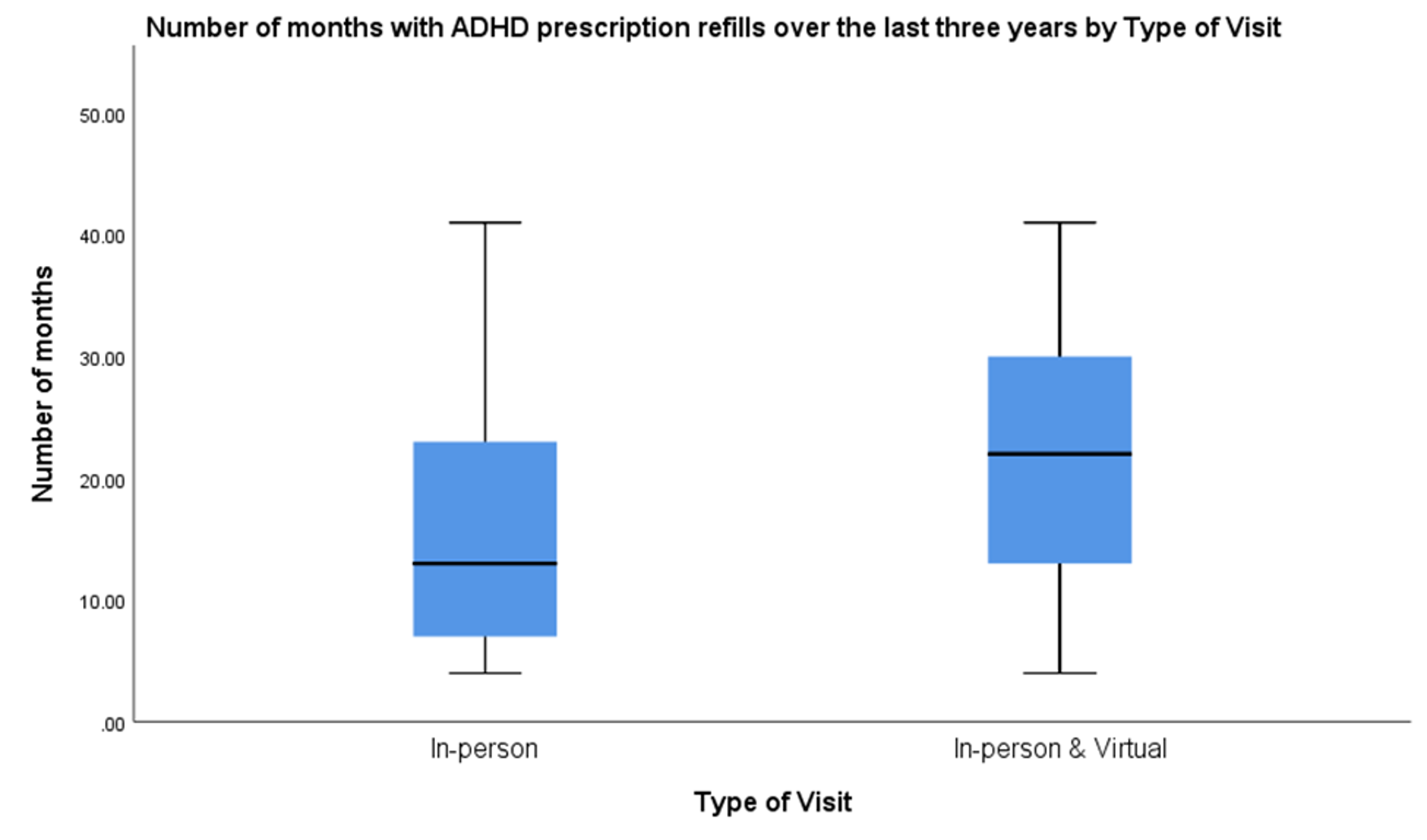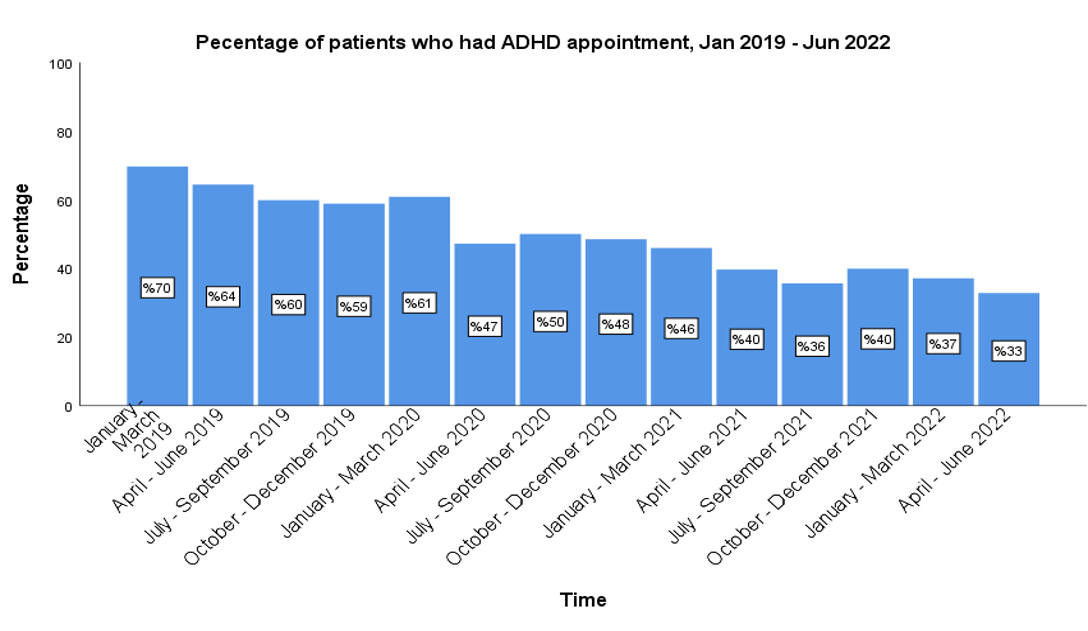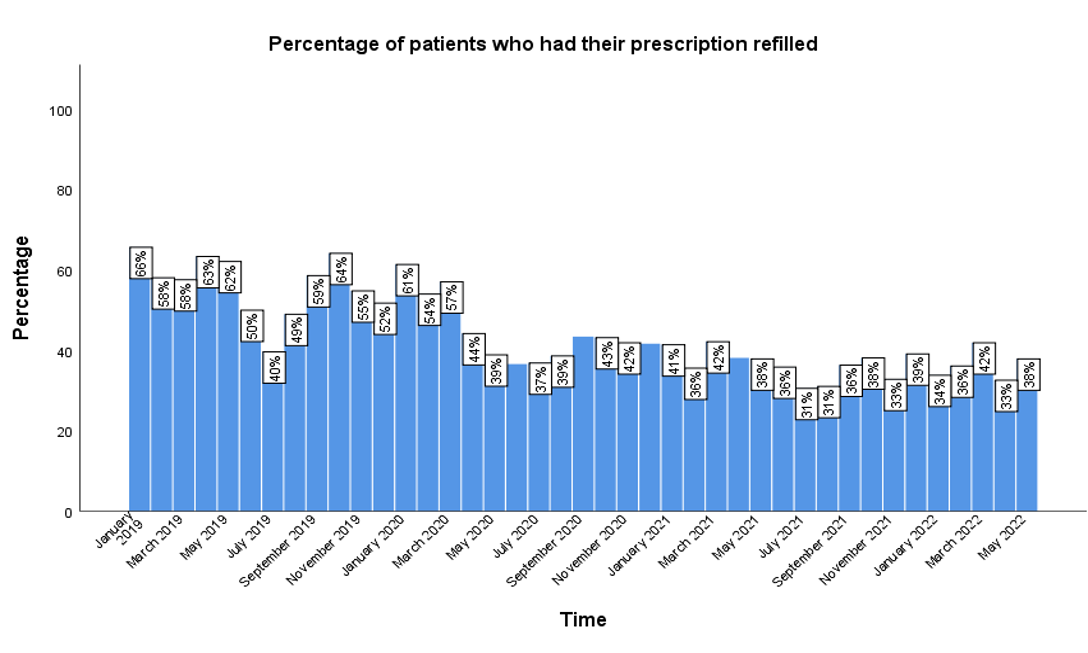Developmental and Behavioral Pediatrics: ADHD/Learning Problems/Schools
Developmental and Behavioral Pediatrics 1
554 - ADHD Prescription Patterns and Medication Adherence in the COVID-19 pandemic
Publication Number: 554.108
.jpg)
Peter J. Cunniff, BA (he/him/his)
Medical Student
Eastern Virginia Medical School
Norfolk, Virginia, United States
Presenting Author(s)
Background:
COVID-19 has altered the traditional classroom model of education from an in-person to virtual and hybrid platforms, which has put students with attention deficit hyperactivity disorder (ADHD) at risk of disruptions in their medication regimen and school performance. In addition, telehealth appointments have become increasingly more common during the pandemic. One way to analyze ADHD management is through medication adherence, which can be measured through the prescription refill schedule of patients.
Objective:
Our study aims to identify if ADHD medication regimens at the Children’s Hospital of the King’s Daughters (CHKD) were disrupted during the pandemic and if telehealth management demonstrates a higher rate of adherence.
Design/Methods:
A retrospective chart review collected age, sex, race, refill schedule, and appointment schedule of 396 CHKD patients. Patients were selected if they were between the ages of 8-18, had an ADHD diagnosis before January 2019, and refilled their medication at least four times since January 2019. Variables were compared using either a two-sample t-test or linear regression.
Results:
The total percentage of patients who had their ADHD medications refilled between January 2019 and March 2020 (pre-pandemic) ranged from 40-66%, as opposed to 31-44% between April 2020 and May 2022 (pandemic), p< 0.001. Additionally, the total percentage of patients who had quarterly ADHD management appointments between January 2019 and March 2020 ranged between 61-70% as opposed to 33-50% between April 2020 and June 2022, p< 0.001. The number of months that a prescription was refilled was significantly correlated with total number of ADHD appointments (r=0.40, p< 0.001), virtual appointments (r=0.27, p< 0.001), and in-person (r=0.35, p< 0.001) appointments. The number of months with prescription refills over the last three years was significantly higher among those who had both virtual and in-person visits (m=22.03) than those who had just in-person visits (m=15.97) (p< 0.001).
Conclusion(s):
Since the pandemic started in the US in March 2020, ADHD patients have neither refilled their medications nor been managed by a physician as frequently. Even before the pandemic started, many ADHD patients were not on a consistent regimen. This data suggests a need to reevaluate the ADHD symptoms of CHKD patients periodically and return them to a more consistent regimen as well as implement methods to increase adherence to greater than pre-pandemic levels. Telehealth appointments are a potential solution to increase adherence among ADHD patients.


